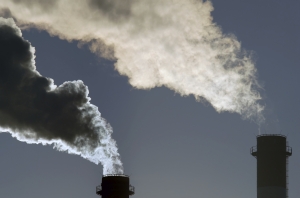The price of Australian Carbon Credit Units (ACCUs) has continued its recent climb, reaching a four-year high of $17.50/t, in line with modelled clearing prices at the first ERF auction in April 2015. Prices have surpassed the recent six month high of $17.45/t set just prior to the federal election in May 2019.
The secondary price has jumped around 20 per cent from a low of $14.80/t in July, underpinned by demand from voluntary participants and state governments. Despite the price increase, traded volumes remain low, with price gains reflecting the limited liquidity in the local market.
The current price corresponds to our modelled highest clearing price at the first ERF auction (April 2015) against a weighted average price of $13.95/t disclosed by the Clean Energy Regulator.
As noted in our earlier Carbon Quarterly outlook, we continue to model a cumulative surplus of offsets in the market, with ACCU issuance forecast to keep pace with contracted demand from the Emissions Reduction Fund. Early issuance to projects ahead of their ERF contracts for scheduled delivery is expected to supply additional ACCUs to cover demand at a price premium over the immediate term. However, the thin liquidity of the market could continue to put pressure on contracted supply and drive upward pressure on prices as new (even small) sources of demand emerge, particularly from state governments and the voluntary market.
For example, the Queensland government is modelled to become the largest source of demand for ACCUs, contracting for over 90,000 offsets through its CarbonPlus Fund next year. This is 50 per cent more than the total volume of carbon offsets contacted by the Clean Energy Regulator at the most recent ERF auction in July 2019, where just 3 contracts were awarded for 59,000 credits.
This was the lowest auction result on record, almost 850x lower than the high point set in April 2016, where over 50 million credits were contracted by the Regulator.
Clean Energy Regulator drops the ERF Benchmark Price
On Friday the Regulator noted that the next ERF auction will be held 25 and 26 March 2020, meaning just one auction in 2019 – a break from the semi-annual schedule held since 2015. This underpinned by limited participation in the scheme, and low contacting at the previous auction.
The Regulator has also announced the abolition of the ‘Benchmark Price’ (or price ceiling), set prior to each ERF auction. This is likely to have a limited impact in and of itself, with the Regulator always able to set the benchmark price. Removing the benchmark price is not expected to impact broader participation in the scheme. As a result, the rule change is playing around the edge rather than addressing a more substantive problem with the efficiency of the scheme.
Long-term price increases as target is scaled up to net-zero
Longer-term, we continue to model price increases in line with the cost of abatement to meet scaled up emissions target scenarios, and alternate net-zero emissions pathways (between 2038 and 2048).
Should Australia’s emissions reduction ambition be scaled up to 45 per cent below 2005 levels by 2030, Australia is modelled to achieve net-zero emissions by 2048, approximately compatible with the global accord to keep global warming to 2 degree Celsius (°C) under the Paris Agreement.
Should Australia’s emissions reduction ambition be scaled up to 63 per cent below 2005 level by 2030, Australia is modelled to achieve net-zero emissions by 2038, broadly similar with the objective of limiting global warming to 1.5°C, a stated ambition of the Paris Agreement.
Under such scenarios, long run prices are modelled to grow in line with scaled up ambition, with the price of abatement averaging between $25 and $35 per tonne of carbon dioxide equivalent over the modelling period.
To access our latest Carbon Quarterly outlook, please click here.
Best wishes,
The RepuTex Team
Australian Emissions Markets















